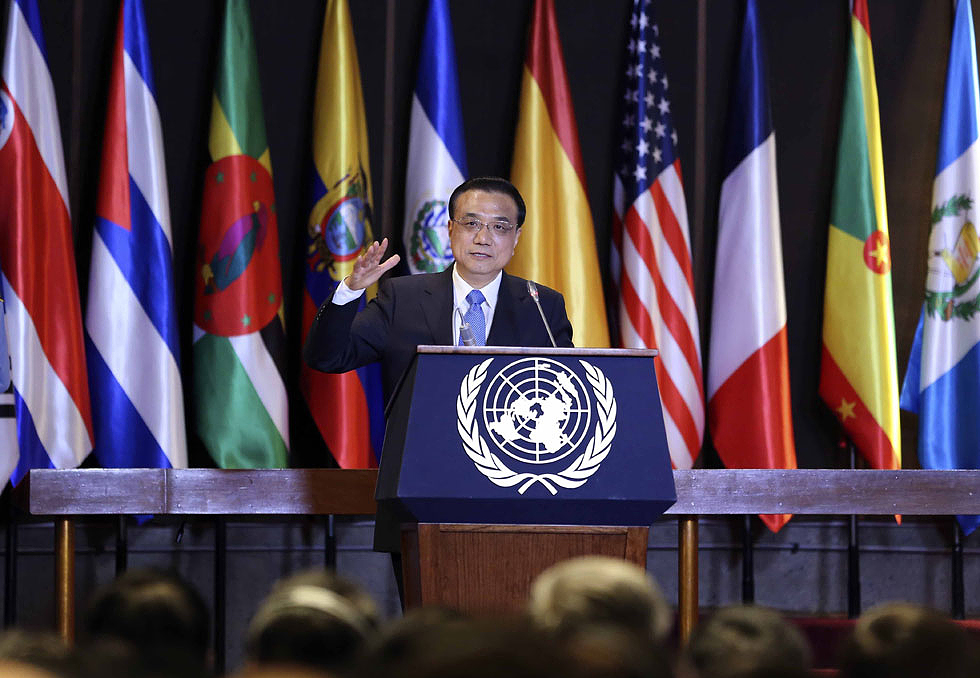China-Latin America relations yield increased trade, exchanges

In May, 2015, during his visit to Brazil, Premier Li Keqiang first put forward the “three-by-three model” of cooperation.
As part of the ongoing official year of China-Latin America cultural exchanges, Luis Almagro, secretary-general of the Organization of American States (OAS), visited the Chinese Academy of Social Sciences (CASS) on March 1 to deliver a report on how China can more effectively cooperate with Latin American and Caribbean nations.
Almagro also exchanged views on related issues with attendees from the Institute of Latin American Studies at CASS, the China Institute of Contemporary International Relations and Beijing Foreign Studies University.
Ties rooted in history
China’s exchanges with Latin America and the Caribbean started centuries ago. As early as the 16th century, 20 to 60 ships sailed along the maritime Silk Road every year, contributing to trade in silk, cotton, jewelry, gunpowder and shoes between China’s coastal areas and Acapulco, Mexico, according to historical documents. In the 19th century, many Chinese laborers traveled to Peru, Brazil, Argentina, Chile, Nicaragua and Panama in Latin America as well as to Jamaica and other places in the Caribbean.
Since 2000, relations between the two sides have been fruitful, as evidenced by increasing commodity trade and financial cooperation, Almagro said. New momentum is needed to broaden the scope of the relationship and to bring about shared economic and social progress.
Noting that the relationship is fairly mature, Almagro called for a more solid strategic partnership in public security, energy, infrastructure and other fields. He also predicted that cooperation in areas other than trade and investment under the new South-South cooperation framework will result in a qualitative leap in the relationship.
Broadening scope
Chinese officials have emphasized the high premium placed on relations with Latin America and the Caribbean. While attending the first China-Latin America and the Caribbean Summit in July, 2014, Chinese President Xi Jinping proposed a new “one-plus-three-plus-six” cooperation framework. In 2015, Chinese Premier Li Keqiang further interpreted the framework to a “three-by-three model” to upgrade China’s practical cooperation with Latin America and the Caribbean.
Almagro said that the sluggish growth of the global economy has greatly affected emerging and developed economies alike, and developing countries are also feeling its impact. He pointed out that to meet future challenges, the quality of the relationship should be improved in addition to an increase in the quantity of trade and other exchanges. Although China-Latin America trade has grown dramatically since 2000 and China has provided loans of several billions to Latin America, measures must be taken to ensure that growth is sustainable and will not be affected by the global economic slowdown, he said.
Over the past few decades, the Chinese economy has made great achievements, showing that through persistence, will and support from society, more opportunities can be created and poverty can be greatly reduced, Almagro said. While maintaining rapid growth, China has always upheld inclusiveness as a core value, he said. Other emerging economies and middle-income economies should study China to learn from its wisdom, he said.
Sustainable cooperation
Latin America and the Caribbean combined form the fourth-biggest trade partner of China, after the United States, Japan and South Korea. China has signed free trade agreements with Chile, Peru and Costa Rica. In recent years, China’s investment in Latin America totaled $10.7 billion, and in past decades Chinese banks have given a total of $125 billion in loans to Latin America. Moreover, China has invested heavily in Latin American infrastructure.
As the first OAS Secretary General to visit China, Almagro said he hopes to build a new framework for relationship and promote more in-depth cooperation. Based on achievements made so far and through adequate strategies and measures, the partnership can endure, he said.
Gao Xinran is a reporter at the Chinese Social Sciences Today.
